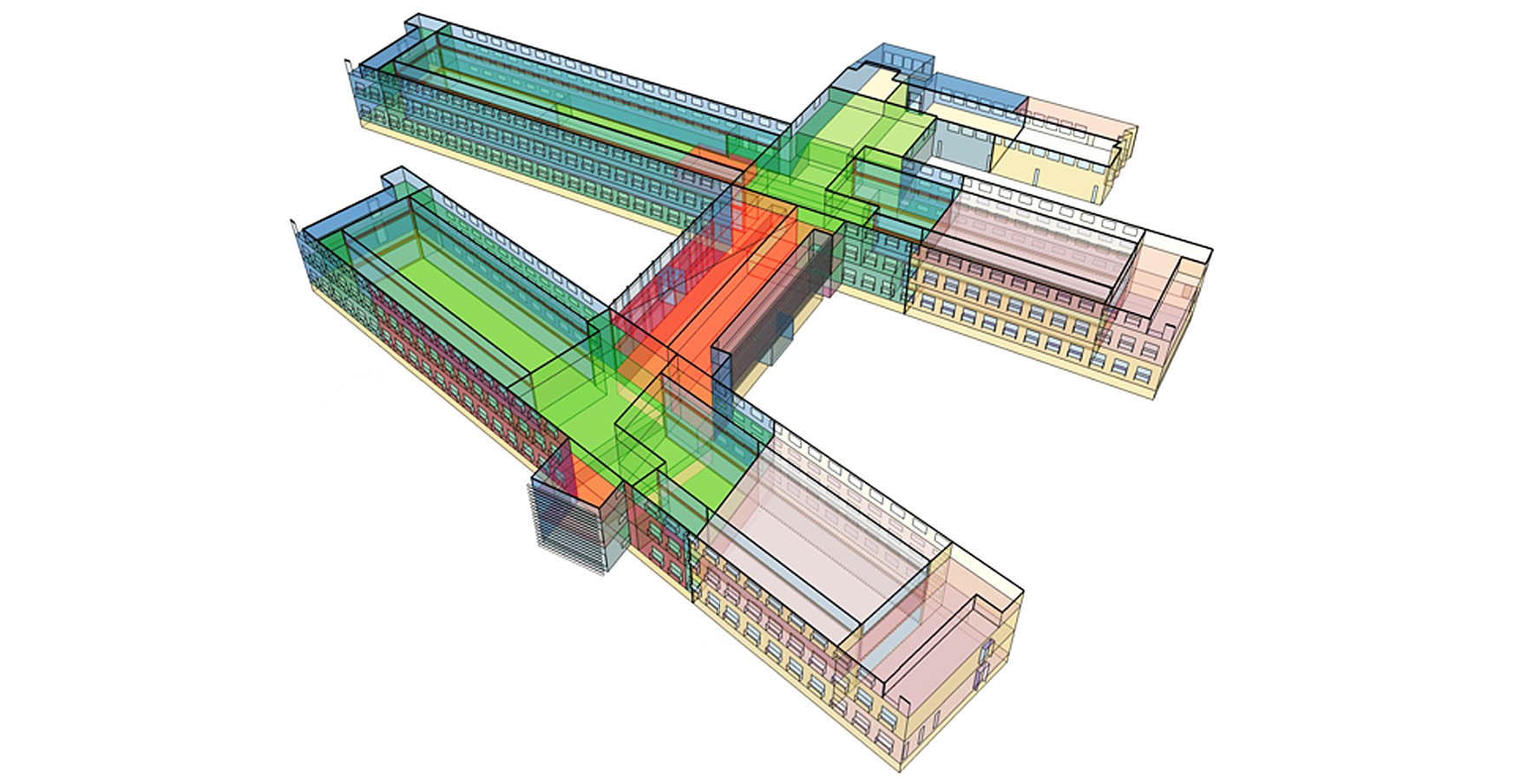Buildings Data and Tools
NREL offers data and tools to help consumers, manufacturers, researchers, and utilities construct energy-efficient and cost-effective buildings.
These resources include standardized product data and findings, whole building simulation programs, machine-learning software models, and capabilities to help users identify ways to improve energy efficiency and make the grid more efficient, resilient, and reliable.

BEopt: Building Energy Optimization
The Building Energy Optimization (BEopt™) tool evaluates single-family detached and multifamily building designs and identifies the most cost-effective whole-house efficiency packages to achieve zero energy. The tool analyzes new construction and existing home retrofits, evaluating single building designs, parametric sweeps, and cost-based optimizations.
BESTEST-EX
BESTEST-EX is a test procedure that allows software developers to evaluate their audit tools' performance in modeling energy use and savings in existing homes when utility bills are available for model calibration. The NREL Buildings Research team developed BESTEST-EX to support the larger effort of assessing and improving the accuracy of energy analysis for residential buildings.
BuildingSync
BuildingSync® is a standardized data format for building energy audits that simplifies sharing, comparing, and reusing data. The schema allows data to be more easily aggregated, compared, and exchanged between databases and software tools. It streamlines the energy audit process for energy auditors, software providers, building owners, utilities, and other implementors.
ComStock
The ComStock™ analysis tool is an NREL model of the U.S. commercial building stock. ComStock allows stakeholders of various technical inclinations to better understand how the commercial building stock in the U.S. uses energy and how various technologies and demand-side management strategies could change that energy use pattern in the future.
End-Use Load Profiles for the U.S. Building Stock
This data set is critical for utility planners, regulators, state energy offices, researchers, and building owners to understand ways to best manage energy use. End-use load profiles can identify which efficiency measures are most valuable to the grid or which energy-consuming activities can be shifted to different times of the day to reduce peak loads. Utilizing this information can decrease utility costs, reduce customer bills, and use clean, renewable energy sources when available. The end-use load profiles are available in three formats: via a web viewer, as downloadable spreadsheets, and in a detailed format that can be queried with big-data tools.
EnergyPlus
EnergyPlus® is a state-of-the-art open-source building energy modeling (BEM) simulation engine. It provides the detailed and validated physics-based algorithms needed by building designers and researchers to accurately model whole-building system energy performance to inform integrated design, early-stage and advanced R&D, standards, policy, and investment decision-making. The EnergyPlus simulation software provides a robust and reliable simulation engine that can be embedded inside critical workflows, ensuring it meets the requirements of researchers, designers, users, and policymakers.
foresee
foresee™ uses machine-learning algorithms, advanced data analytics, and physics-based modeling and simulation to derive data-driven appliance models and energy use patterns within a home and predict future energy consumption while coordinating the operation of connected appliances. This secure home automation system takes occupants' personal habits and priorities into account and automatically creates energy-saving scenarios homeowners can comfortably implement.
OCHRE: Object-Oriented Controllable High-Resolution Residential Energy Model
OCHRE™ is a residential energy model designed for advanced controls, optimization, and cosimulation. It includes controllable models for HVAC equipment, water heaters, electric vehicles, solar PV, and batteries. Its control features, high-resolution modeling, and electrical characteristics are suited for modeling residential demand-side management in grid-interactive efficient buildings. OCHRE is python-based and integrates with NREL tools including foresee, BEopt, ResStock, and HELICS.
OpenStudio
The OpenStudio® platform is a collection of open-source software tools that brings together physics-based BEM, large-scale computing capabilities, and data science tools to enable a broad range of building energy analysis applications. The platform includes a software development kit for programmatic access to BEM engines including EnergyPlus®, support for scripting and workflow automation called OpenStudio Measures, prototype building models and standards-related model transformations via the OpenStudio Standards gem, and large-scale simulation analyses on local, cluster, and cloud resources via the OpenStudio Server.
OpenStudio Analysis Framework
The OpenStudio® Analysis Framework makes the creation optimization and parametric analysis of building energy models accessible to architects, engineers, designers, and policymakers. Open-source and scalable to facilitate wider adoption, the framework has a clearly defined application programming interface that other applications can be built upon. It runs on high-performance computing systems, within cloud infrastructure, and on laptops, and uses a common workflow to enable different classes of algorithms. Private sector and government organizations have used it successfully, either through their existing algorithmic and visualization capabilities or linking the large-scale simulation results to external visualization and analytic tools.
ResStock
The ResStock™ analysis tool identifies which home improvements save the most energy and money for cities, states, municipalities, utilities, and manufacturers. This tool processes data from supercomputer simulations with a statistical model of housing stock characteristics as well as large public and private data sources.
SEED: Standard Energy Efficiency Data Platform
The Standard Energy Efficiency Data Platform™ is an open-source platform designed to manage building characteristics and performance data. The SEED® Platform eliminates many technical and workflow challenges associated with collecting and managing performance data for large building portfolios. It helps users combine data from multiple sources, clean and validate it, and generate valuable reports. This allows users to implement building performance regulations or track the performance of their portfolios to increase energy efficiency.
URBANopt: Urban Renewable Building And Neighborhood optimization
The URBANopt™ advanced analytics platform supports the design and optimization of urban districts and helps plan the integration of high-efficiency, sustainable energy technologies communitywide.
Share

